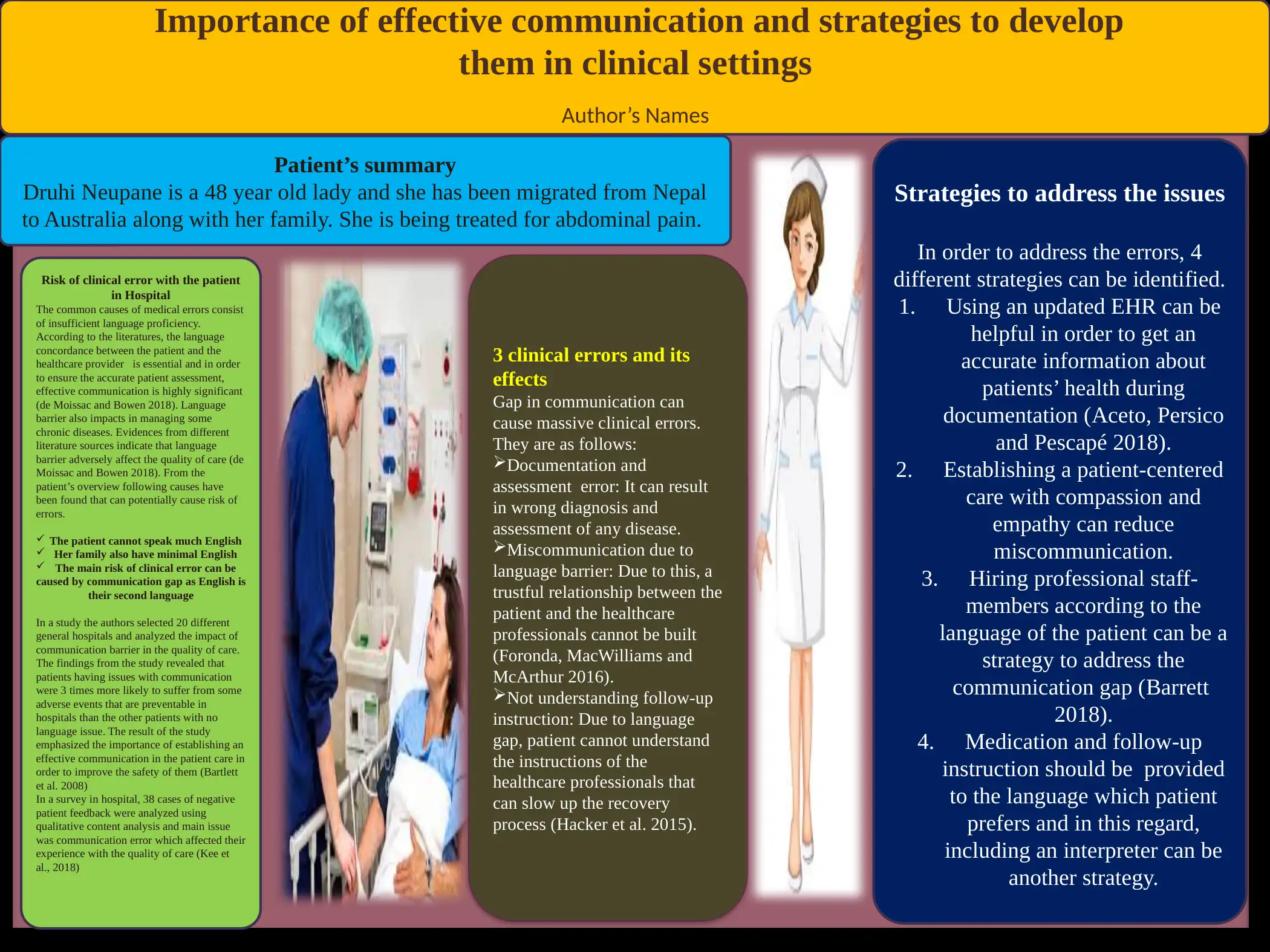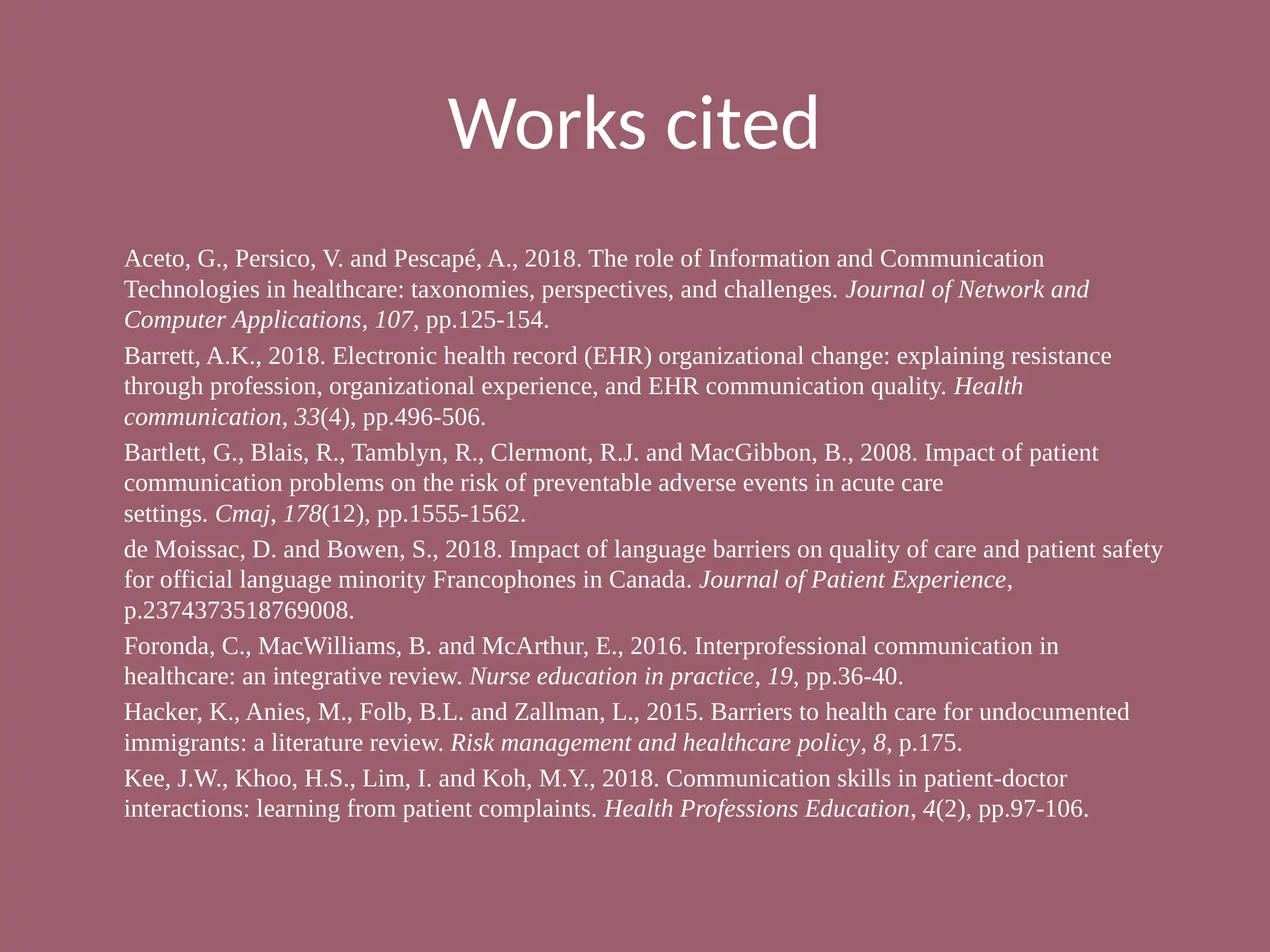Strategies for Effective Communication in Clinical Settings: A Review
VerifiedAdded on 2022/11/17
|2
|821
|497
Presentation
AI Summary
This assignment focuses on the importance of effective communication and strategies to develop them in clinical settings, using a case study of a patient with a language barrier. It identifies communication gaps as a significant cause of clinical errors, such as documentation, assessment, and misunderstanding of follow-up instructions. The assignment highlights the need for patient-centered care, using updated EHR systems, hiring multilingual staff, and providing instructions in the patient's preferred language. It also discusses the potential consequences of communication errors, including incorrect diagnoses, strained patient-healthcare professional relationships, and delayed recovery. The study draws on various research sources to emphasize the importance of effective communication in improving patient safety and overall healthcare quality.
1 out of 2








![[object Object]](/_next/static/media/star-bottom.7253800d.svg)